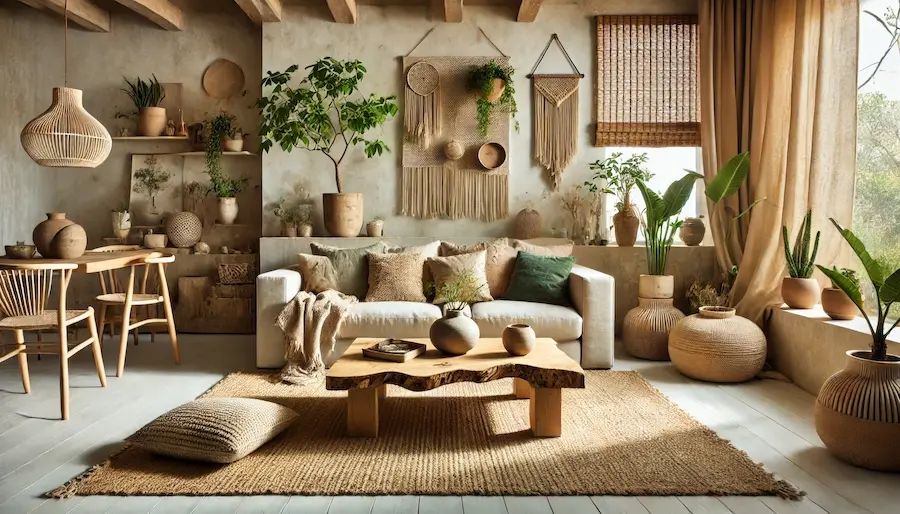An organic living room design harmoniously blends natural elements with modern aesthetics, creating a serene and inviting space that reflects the beauty of the natural world.
Key Features of an Organic Living Room
- Natural Materials: Incorporate elements such as wood, stone, and natural fibers to bring warmth and texture into the space. For instance, a wooden coffee table or stone fireplace can serve as focal points.
- Neutral Color Palette: Utilize soft, earthy tones like beiges, whites, and muted greens to create a calming atmosphere. These colors provide a versatile backdrop that complements natural materials.
- Indoor Plants: Introduce greenery to enhance the organic feel and improve air quality. Plants like fiddle leaf figs or snake plants add life and color to the room.
- Sustainable Furniture: Choose eco-friendly pieces made from sustainable resources to align with organic principles. This includes furniture crafted from reclaimed wood or bamboo.
Applications of Organic Design in Living Rooms
- Warm Wood Accents: Incorporate wooden beams, flooring, or furniture to add warmth and a natural touch to the living room. Wooden elements can create a cozy and inviting environment.
- Natural Textures: Use materials like jute rugs, linen cushions, and wool throws to add depth and tactile appeal. These textures contribute to a layered and comfortable space.
- Organic Shapes: Select furniture and decor with curved lines and natural forms to mimic the irregularities found in nature. This approach softens the space and adds visual interest.
Considerations When Designing an Organic Living Room
- Balance with Modern Elements: Achieve harmony by combining natural materials with modern design features, such as clean lines and minimalist decor. This balance prevents the space from feeling too rustic or too sterile.
- Natural Light: Maximize the use of natural light to enhance the organic ambiance. Large windows or skylights can illuminate the space and highlight natural materials.
- Sustainability: Prioritize eco-friendly materials and energy-efficient lighting to create an environmentally responsible space. This includes using LED lighting and selecting low-VOC paints.
Conclusion
An organic living room design fosters a tranquil and aesthetically pleasing environment by integrating natural materials, neutral colors, and sustainable choices. By thoughtfully combining these elements, you can create a space that is both modern and deeply connected to nature.
